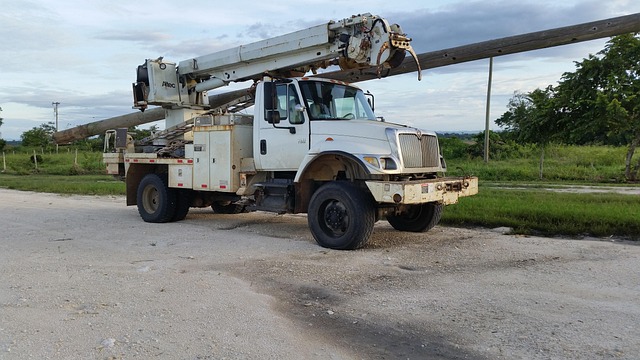When insuring new fleets, understanding each vehicle's unique characteristics and specific operational requirements is vital. By assessing factors like cargo type, mileage, and environment, insurers can tailor insurance plans with the right level of cargo coverage. Balancing cost and comprehensive cargo protection involves strategic risk management through maintenance, driver training, GPS tracking, and data analysis to reduce claims costs. Leveraging technology and tailored policies ensures new fleets receive adequate protection while managing expenses efficiently, enhancing operational success and competitiveness.
Introducing our comprehensive guide on balancing cost and comprehensive protection for new fleet operations. As businesses expand, understanding the unique needs of new fleets becomes paramount. This article explores strategies to navigate the intricate balance between budgeting and securing adequate cargo coverage.
We delve into essential aspects such as evaluating cost-effective options, implementing smart protection strategies, and showcasing successful real-world examples through case studies. Discover how to optimize your fleet’s safety without breaking the bank.
Understanding the Unique Needs of New Fleets

When it comes to insuring a new fleet, understanding the unique needs and characteristics of these vehicles is paramount. Newer fleets often come with advanced technology, specialized equipment, and higher safety standards compared to older models. These factors significantly influence the type and extent of cargo coverage required. Insurers need to assess each vehicle’s specific use case, including the nature of cargo transported, mileage, and operational environments.
For instance, a fleet engaged in long-distance transportation of sensitive goods might require comprehensive cargo coverage, including protection against theft, damage during transit, and environmental hazards. Conversely, a local delivery fleet primarily handling standard cargo may need basic coverage focusing on liability and collision. Tailoring insurance plans to these unique needs ensures that new fleets receive adequate protection while aligning with their specific operational requirements and cost constraints.
Evaluating Cost-Effective Cargo Coverage Options

When introducing a new fleet, one of the primary considerations is balancing cost and comprehensive protection for your cargo. Evaluating different cargo coverage options is crucial in this regard. Opting for tailored insurance plans that offer precise protections against potential risks can significantly reduce expenses while ensuring your valuable cargo remains secure.
In the world of cargo coverage, understanding what’s included and excluded in various policies is essential. By carefully scrutinizing each option, you can identify cost-effective solutions that align with your fleet’s unique needs. This approach allows for navigating the market efficiently, selecting the right balance between protection and affordability, and ultimately contributing to a new fleet’s successful operation.
Strategies to Achieve Comprehensive Protection on a Budget

When launching a new fleet, balancing cost and comprehensive protection can seem like a daunting task. However, there are several strategies to achieve robust cargo coverage without breaking the bank. One effective approach is to focus on proactive risk management. This includes regular vehicle maintenance checks to minimize the risk of breakdowns or accidents, which can significantly reduce claims costs over time. Additionally, implementing driver training programs ensures that your team operates with the highest safety standards, further lowering insurance premiums.
Another key strategy is to leverage technology for better monitoring and tracking. GPS tracking systems and telematics data can provide valuable insights into driving behavior, allowing you to identify and address high-risk patterns. By combining these measures with a careful selection of insurance policies tailored to your fleet’s specific needs, you can achieve comprehensive cargo coverage while managing costs effectively.
Case Studies: Successful Balancing Acts in Real-World Scenarios

In the realm of managing a new fleet, balancing cost with comprehensive protection is a delicate dance. Case studies from real-world scenarios offer valuable insights into successful balancing acts. For instance, consider a logistics company introducing a fresh fleet of cargo vehicles. Instead of opting for the most expensive all-encompassing insurance package, they opted for tailored coverage focused on specific risk areas – such as comprehensive cargo coverage – to safeguard their significant investment while keeping operational costs manageable.
This strategic approach, informed by data and analysis, allowed them to navigate a labyrinthine landscape of options, ensuring their fleet was adequately protected without exceeding budgetary constraints. The result? A robust safety net that enhanced their operational efficiency and competitive edge in the market, proving that prioritizing smart, targeted protection can pay dividends for new fleets seeking optimal value.
When balancing cost and comprehensive protection for new fleets, understanding unique needs and exploring cost-effective cargo coverage options is key. By implementing strategic approaches and learning from real-world case studies, fleet managers can achieve robust protection without breaking the bank. This balanced approach ensures new fleets operate efficiently, securely, and within budget.
